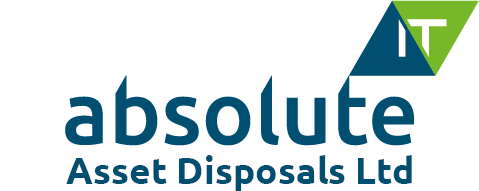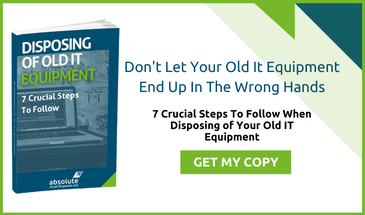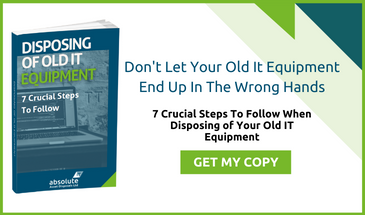
IT Asset Disposal is the catch-all term given to the process of getting rid of computer equipment. IT disposal has two phases
It is very important that all infrastructure owners and managers understand what happens at each step of the process so as to detect if a particular disposal company is not doing things properly. Improper disposal and can incur very severe repercussions for the organisation that owns the equipment. Breaches of the Data Protect Act, for example, carry massive financial penalties should personal data leak into the public domain. Improper recycling of the hardware may result in toxins from the metals seeping into the ground and into the water table.
Getting Rid Of Data – The Difference Between Wiping Data & Deleting It
There are forensic tools, both software and hardware, designed specifically to recover data from hard drives that people think they have completely deleted. Therefore it makes sense to ensure your data sanitisation process is completely thorough and that the collection company adheres to it and can certify that it has been done for each piece of equipment.
Delete, erase, shred, wipe – understand what each term really means and the vital differences between them.
- Deleting a file just removes its entry from the file system index so that it does not appear in the list of files. The data remains in place and can be retrieved very easily with data recovery software.
- Erasing does remove it permanently through wiping, shredding or physical destruction of the storage device. You always want to erase data from redundant equipment before disposal.
- Shredding a file means overwriting all of its contents with new “white noise” data. The original contents of the file can never be recovered again.
- Wiping a drive means overwriting every part of it with new “white noise” data. No original data can be recovered from a disk that has been wiped. Note: formatting a hard drive does not delete all of its data.
The ultimate sanitisation method is physical destruction of the hard drives. Our specialist mills can reduce a hard drive to 6mm fragments, thus guaranteeing 100% that data cannot be recovered. Ever.
Responsible Recycling Vs Cowboy Collection Companies
Equipment that still has value in some markets, such as third world educational establishments, can be refurbished and passed along with little effort. Responsible recycling involves using only recognised distribution methods and channels. All too often, equipment ends up in a breaker’s yard in a third world country where child labour is used to strip it down. Parts that are not valued are dumped and leach metals and toxins into the water supply.
Many small disposal companies do not possess the expertise or resources to correctly execute and oversee all the critical aspects of equipment disposal. For example, correct recycling of circuit boards involves knowing how to isolate and dispose of the toxic components and heavy metals like gold, silver, copper, palladium and others.
By working with a reputable ADISA accredited recycling partner you avoid these risks while helping you prolong the lifespan and extend the value of your unwanted IT assets.
Do You Know If You Are Compliant?
Regulations apply to many aspects of disposal and recycling from data protection legislation to e-waste regulations. Ignorance of the law is no defence should an inadvertent breach occur and be discovered. Penalties, fines and sanctions can be very severe indeed.
While it is important to keep abreast of emerging rules, it also pays to minimise risk to the fullest possible extent by engaging The Professionals whose business it is to do everything by the book and be seen to be doing so at every step.
At Absolute IT Asset Disposal we have a whole range of secure data sanitisation and asset disposal services. Call us today on 01332 371 989 for an informal initial chat about your requirements.











